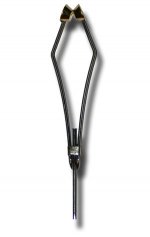Get all of the colors of dubbing that you want. For caddis, I like green, tan, olive, brown, and black, but that depends on what color caddis you like to fish.
Get deer hair for the caddis dries. Look for stiff with short, fine tips. You will want a hair stacker, if you don't already have one. I don't bother hackling my deer hair caddis, so I wouldn't bother with it. You can get some hackle if you want, but it's expensive.
For caddis larva, they are as simple as they look. Dub with the appropriate color, rib, and maybe add a turn of peacock herl or dubbing at the bead. Caddis pupa are a cross between the two, and I like to include cdc or antron to give the emerger effect.
For hare's ears, you can either get a hare's mask, or you can get packaged hare's ear dubbing. I prefer the real thing, but the packaged dubbing is handy too. I prefer hareline for that.
Pheasant tails basically require pheasant tail, copper wire, and peacock herl.
So here's the materials I'd get at a bare minimum:
Dubbing various colors, as well as hare's ear hareline dubbing.
Deer Hair (and stacker if needed)
Peacock herl
Cdc or antron, depending on what the patterns you use require
Hare's mask
Pheasant tail
Copper wire
Then get hooks in appropriate sizes. I would get straight shank plain dry fly hooks and use them for both dries and nymphs. Throw in some curved hooks for caddis and scuds. Get beads to fit the hooks.
For any other patterns that you want to tie, look up the recipe. Write down the materials needed, and decide if you want to get them.





